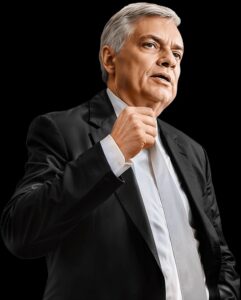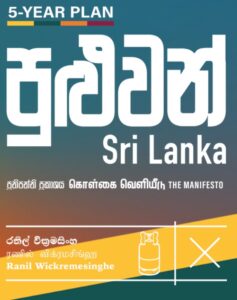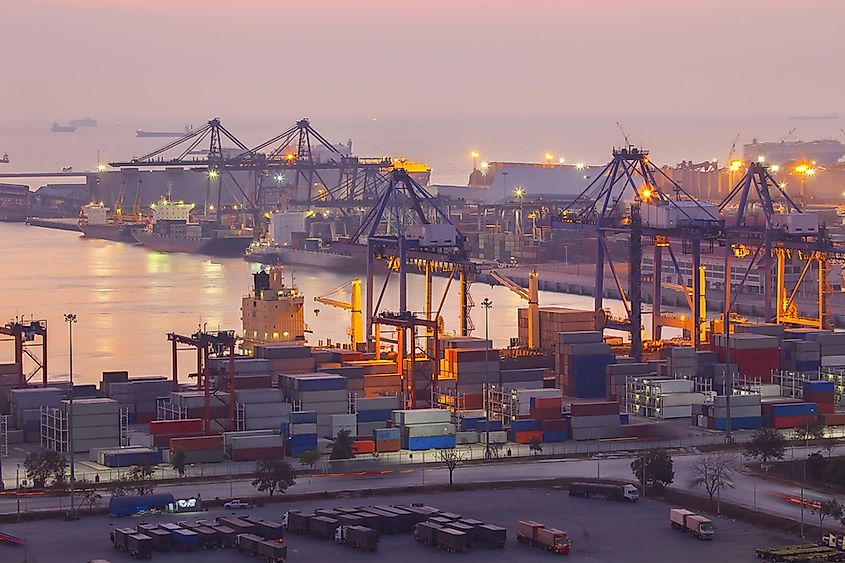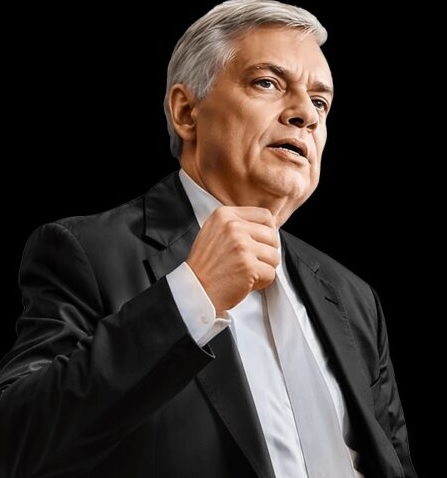“An election manifesto is more than just a list of promises; it’s a vision for the country, a roadmap of where we are and where we want to go.” — Tony Blair
An election manifesto ideally serves as a blueprint of promises and a declaration of intent that charts the course a party intends to take. It’s both a contract with voters and a vision for the future, embodying the values and priorities that will shape the nation’s path forward. However, in the Sri Lankan context, most election manifestos have been a list of wishful thinking and empty promises that rarely deliver as expected.

It is time to change this practice if we are to seriously evaluate our leaders before electing them.
The election manifesto of Ranil Wickramasinghe is different from others that merely make predictions of an unknown future. Wickramasinghe’s manifesto is grounded in reality and provides a clear roadmap of where we are and where we want to go. It is the responsibility of the citizenry to critically evaluate and determine if the path shown by Ranil Wickramasinghe is suitable for a future where we can all be fellow travelers. According to Ranil Wickramasinghe, this election is a choice between a stable and prosperous future for Sri Lanka or a return to chaos and uncertainty for every family. There is no doubt that the decisions taken by voters on the 21st of September 2024 will have a lasting impact on future generations.
Wickramasinghe argues that voting for an inexperienced leader is a gamble with our future and will cost hardworking Sri Lankans dearly. He presents a pathway to recovery from the chaos of 2022, which will be executed within a five-year plan.
The plan comprises a range of initiatives, including innovative projects such as renewable energy, technological zones, investment zones, a climate university, a National Development Fund, a Digital Transformation Agency, and the creation of 100,000 jobs. He intends to remove taxes on essentials, increase the availability of local produce, and bring in the necessary goods from overseas. New employment opportunities will be created, thereby expanding the job market, while additional income generation opportunities will also be developed.

The future export economy model has been developed using two successful regional models—Thailand and Vietnam.
Thailand achieved rapid economic growth by implementing export-oriented policies, investing in infrastructure, and diversifying its industrial base. Strategic government initiatives and integration into global supply chains helped transform Thailand into a leading exporter in sectors like electronics, automotive, and agriculture in the region.
Taking these factors into account, Wickramasinghe compares Sri Lanka with Thailand.
In 1960, Thailand had a per capita income of $104, while Sri Lanka had a slightly higher per capita income of $114. However, by 2023, the gap had widened drastically, with Thailand’s per capita income skyrocketing to $7,172, while Sri Lanka’s per capita income lagged behind at $3,828. Thailand’s rapid economic growth resulted from export-oriented policies, infrastructure investment, and industrial diversification. Strategic government initiatives and global supply chain integration helped transform it into a leading exporter in key sectors.
The case of Vietnam cited by Ranil Wickramasinghe is somewhat similar. In 1990, Sri Lanka had a GDP of $8 billion, while Vietnam lagged behind with a GDP of only $6.5 billion. However, after about two decades, things changed dramatically. By 2023, Vietnam had a GDP of $429 billion, while Sri Lanka’s GDP was only $84.4 billion.
Vietnam’s shift to a market-oriented economy through the Đổi Mới reforms in 1986, coupled with increased foreign investment and trade liberalization, spurred rapid economic growth. By 2023, these reforms, along with a strong focus on manufacturing and exports, transformed Vietnam into a dynamic emerging economy with a GDP of $429 billion.

What made the difference?
Undoubtedly, Sri Lanka has missed key economic growth opportunities compared to Thailand and Vietnam.
Ranil Wickramasinghe’s election manifesto goes beyond promises; it has foresight, vision, and, above all, is grounded in reality. It is a realistic roadmap that tells us where we are and where we want to go. Ranil Wickramasinghe is asking for a mandate to correct past mistakes and catch up on missed opportunities.







